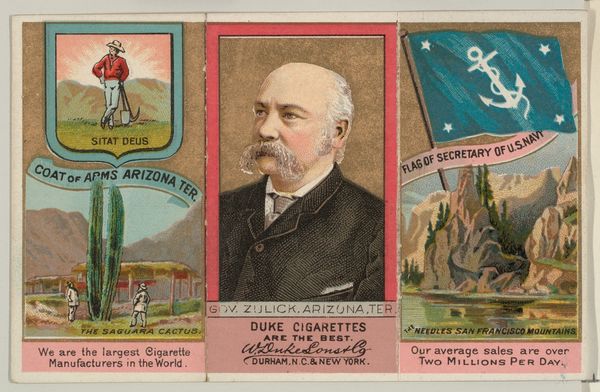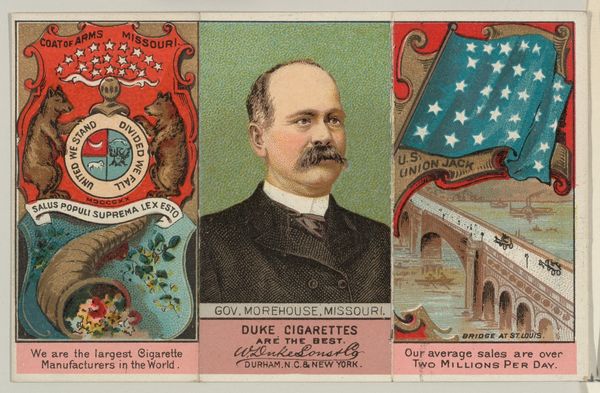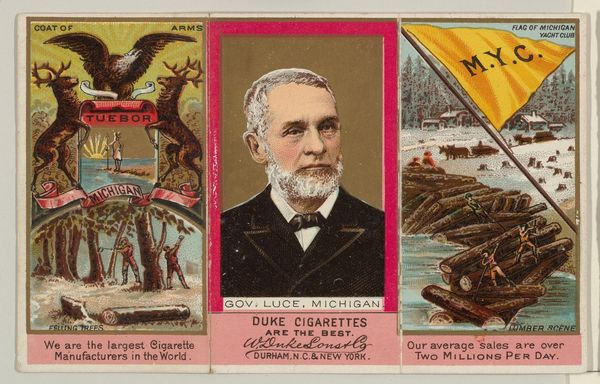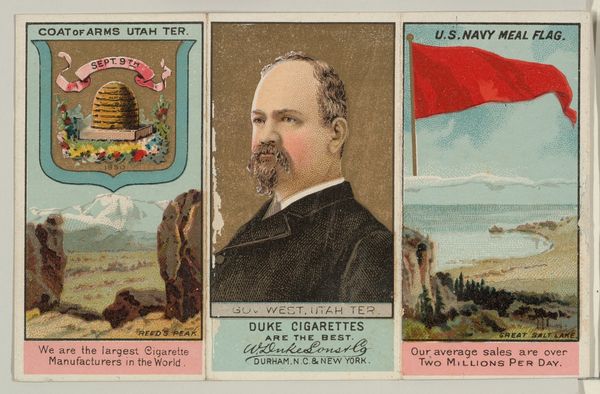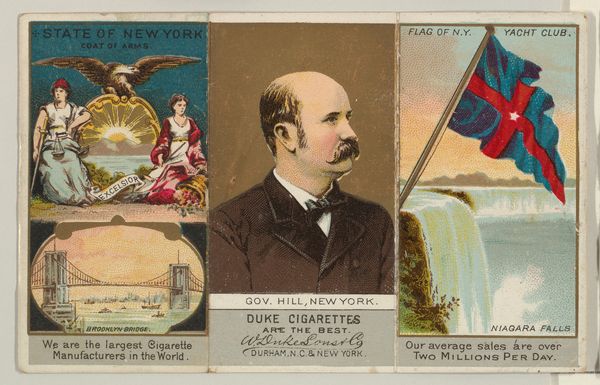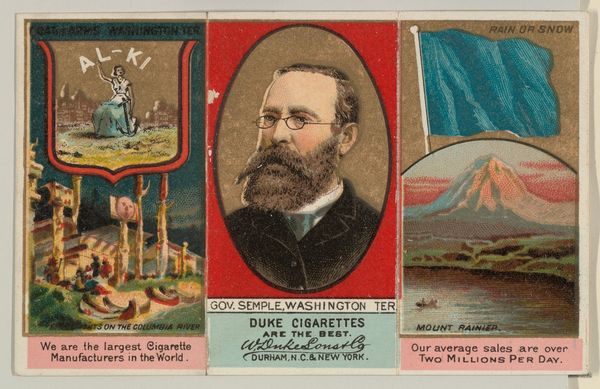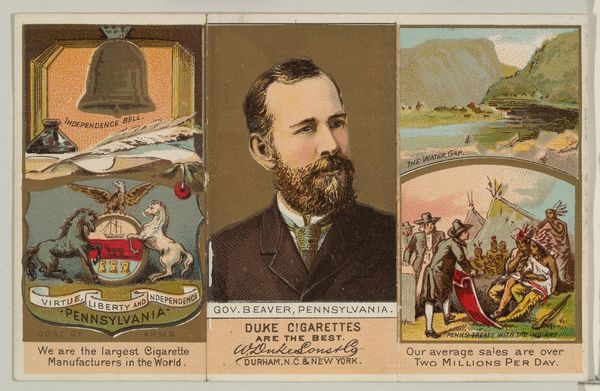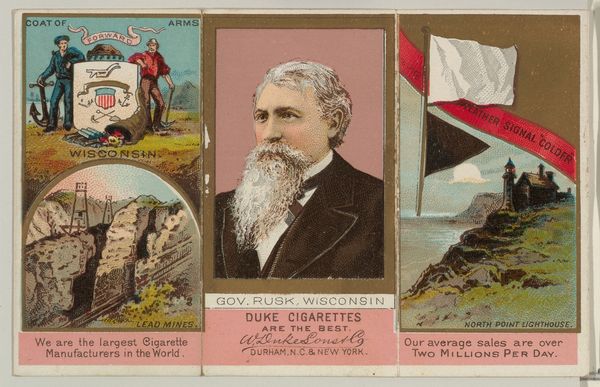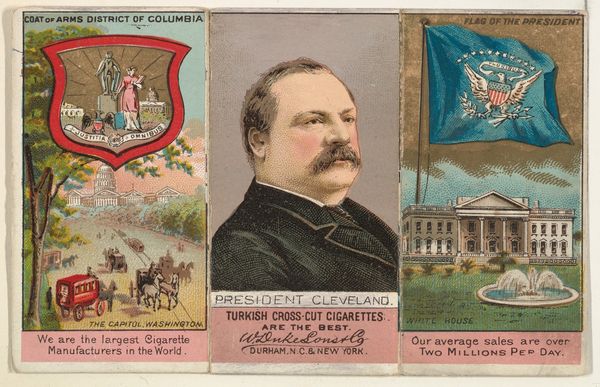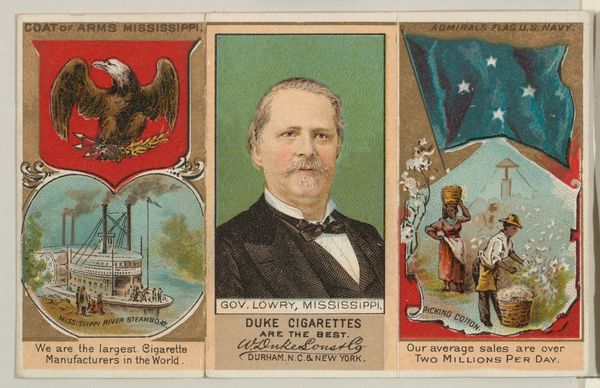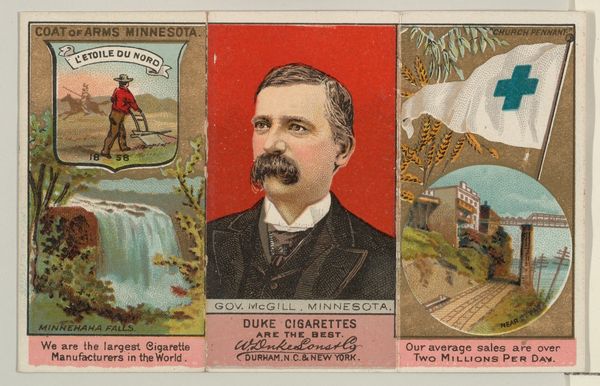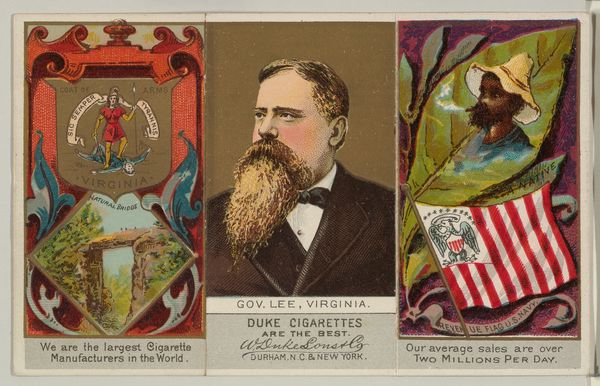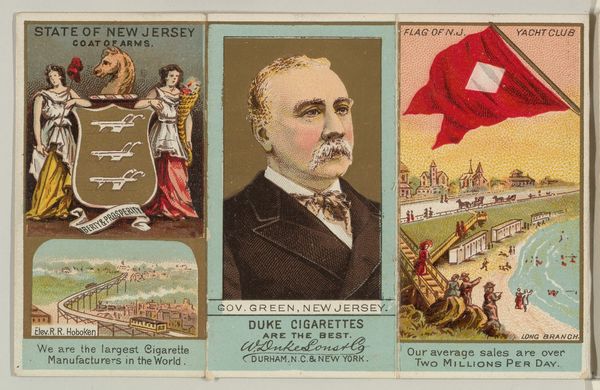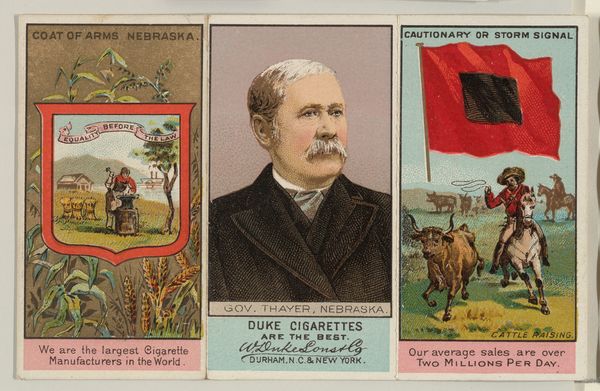
Governor McEnery, Louisiana, from "Governors, Arms, Etc." series (N133-2), issued by Duke Sons & Co. 1885 - 1892
0:00
0:00
drawing, coloured-pencil, lithograph, print
#
portrait
#
drawing
#
coloured-pencil
#
lithograph
# print
#
caricature
#
landscape
#
caricature
#
coloured pencil
#
folk-art
#
19th century
Dimensions: Sheet (unfolded): 2 3/4 × 4 5/16 in. (7 × 11 cm) Sheet (folded): 2 3/4 × 1 3/8 in. (7 × 3.5 cm)
Copyright: Public Domain
Curator: At the Metropolitan Museum of Art, we're looking at a print entitled "Governor McEnery, Louisiana, from 'Governors, Arms, Etc.' series," created between 1885 and 1892 by W. Duke, Sons & Co. It combines lithography with colored pencil. What's your immediate take? Editor: The juxtaposition of imagery feels inherently unbalanced. Governor McEnery appears rather staid, framed by scenes carrying distinctly different connotations and radiating very different emotional temperatures. Curator: Precisely! Look at how the Louisiana coat of arms featuring the pelican feeding its young, a powerful symbol of sacrifice and provision, is directly alongside a scene of sugarcane harvesting—likely depicting the labor of enslaved or recently freed people. The blatant advertising of "Duke Cigarettes" further complicates the narrative. Editor: Semiotically, the elements fight each other for dominance. The hard lines of the lithography attempt a clear statement, but the varying visual registers undermine a singular, coherent message. Is this intended to celebrate Louisiana, McEnery, or Duke cigarettes? The signifiers are a jumble. Curator: It certainly provides a fragmented and problematic depiction of the South. Note also the image of the Mississippi River—commerce, industry, yet shadowed by a complicated past of exploitation and forced labor. These commercial cards acted as miniature time capsules, revealing anxieties and aspirations of the time. Editor: And the choice of color contributes to the fractured reading experience. The muted tones of the governor's portrait contrast sharply with the bolder colors in the landscapes surrounding him. Curator: It's a potent mix of image and text, revealing both the promise and the deep moral ambiguities embedded in late 19th-century American capitalism. The symbols reveal uncomfortable truths if you care to decipher them. Editor: Indeed. Analyzing these deliberate artistic and structural decisions offers valuable lessons regarding intent and influence within historical works.
Comments
No comments
Be the first to comment and join the conversation on the ultimate creative platform.
